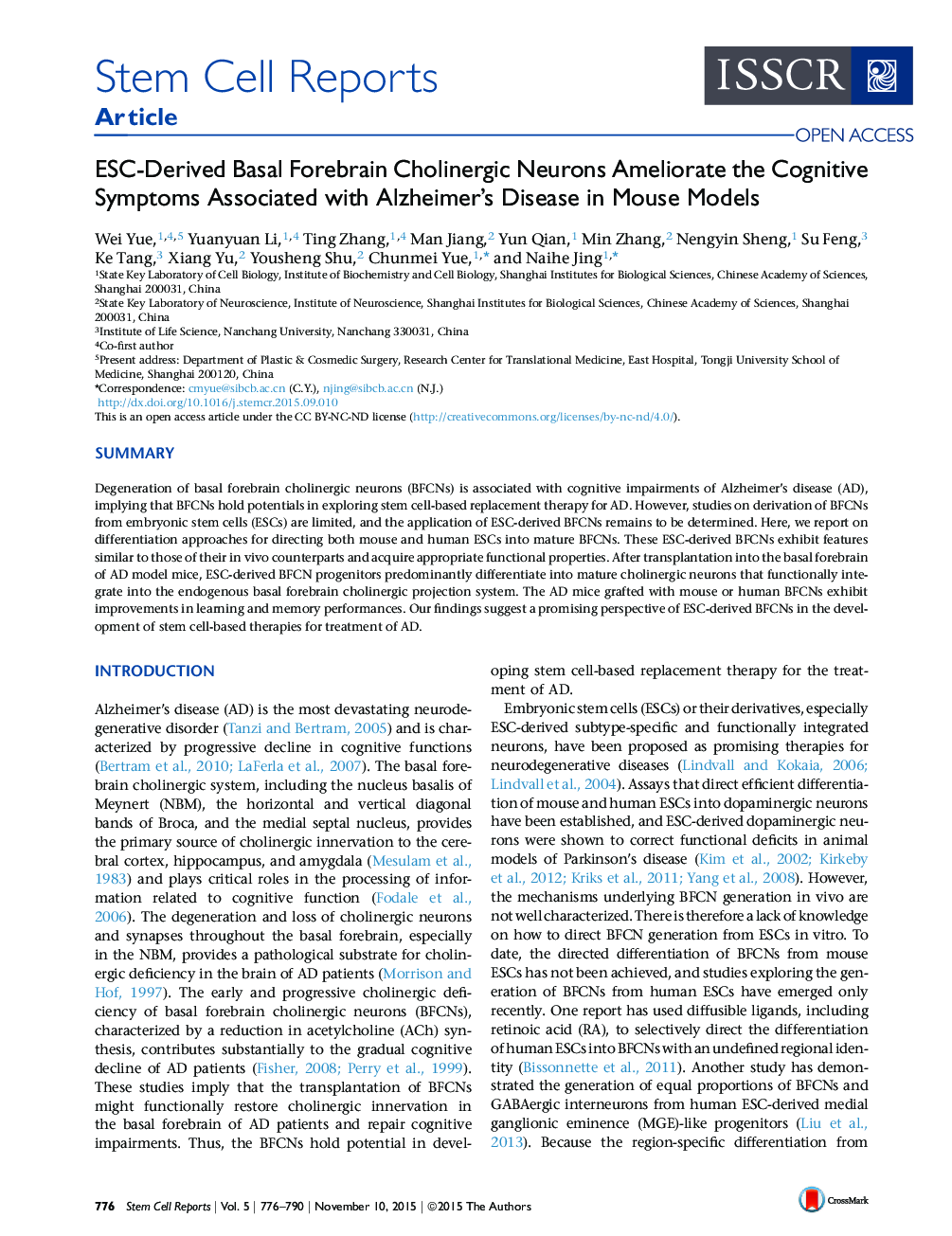| Article ID | Journal | Published Year | Pages | File Type |
|---|---|---|---|---|
| 2093751 | Stem Cell Reports | 2015 | 15 Pages |
•Mouse and human ESCs differentiate into basal forebrain cholinergic neurons (BFCNs)•ESC-derived BFCNs exhibit functional properties in vitro and transplanted in vivo•ESC-derived BFCNs functionally integrate into the basal forebrain of AD mice•The AD model mice grafted with BFCNs exhibit improvements in cognitive abilities
SummaryDegeneration of basal forebrain cholinergic neurons (BFCNs) is associated with cognitive impairments of Alzheimer’s disease (AD), implying that BFCNs hold potentials in exploring stem cell-based replacement therapy for AD. However, studies on derivation of BFCNs from embryonic stem cells (ESCs) are limited, and the application of ESC-derived BFCNs remains to be determined. Here, we report on differentiation approaches for directing both mouse and human ESCs into mature BFCNs. These ESC-derived BFCNs exhibit features similar to those of their in vivo counterparts and acquire appropriate functional properties. After transplantation into the basal forebrain of AD model mice, ESC-derived BFCN progenitors predominantly differentiate into mature cholinergic neurons that functionally integrate into the endogenous basal forebrain cholinergic projection system. The AD mice grafted with mouse or human BFCNs exhibit improvements in learning and memory performances. Our findings suggest a promising perspective of ESC-derived BFCNs in the development of stem cell-based therapies for treatment of AD.
